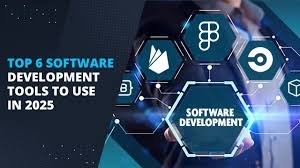Coding marathons used to leave developers drained, staring at screens for hours fixing bugs or writing boilerplate. Enter AI assistants like GitHub Copilot or Amazon CodeWhisperer, which suggest snippets in real-time, slashing time on repetitive tasks. These tools learn from vast repositories, offering context-aware recommendations that feel like having a seasoned partner at your side.
Take a project I tackled last month: Integrating a payment gateway into an app. Normally, that’d eat up a day sifting through docs, but the AI spat out secure, compliant code blocks, letting me focus on custom logic. Forecasts show AI adoption speeding up, with tools handling up to 30% of code generation by year’s end. For beginners, it’s a game-changer—start with free versions to experiment without overwhelming your workflow.
Security remains a watchpoint; always review suggestions for vulnerabilities. Pair it with linters like ESLint for peace of mind. As these evolve, expect deeper integration with IDEs like VS Code, making development smoother for teams big and small.
Low-Code Platforms Democratizing App Building
Gone are the days when app creation demanded deep programming knowledge. Low-code setups like OutSystems or Mendix let users drag-and-drop components, building functional software with minimal scripting. It’s empowering non-tech folks—marketers crafting internal tools or entrepreneurs prototyping ideas overnight.
A colleague built a customer dashboard in hours using one, something that once took weeks. Trends point to widespread adoption, especially in businesses seeking agility amid tight budgets. These platforms handle backend stuff like databases automatically, freeing creators for design tweaks.
Customization has limits, though—complex needs might still require custom code. Start simple: Pick a platform with strong templates and community support. In education, it’s sparking innovation, letting students turn concepts into working prototypes without coding bootcamps.
Quantum Computing Edges Closer to Practical Use
Quantum tech, once sci-fi, is inching toward real-world apps in software. Bits become qubits, solving problems exponentially faster—like optimizing supply chains or cracking encryption puzzles. IBM’s Quantum Experience offers cloud access for testing algorithms without owning hardware.
I dabbled with a simulation last winter, modeling molecular interactions that classical computers struggle with. By 2025, expect more hybrid systems blending quantum with traditional computing for tasks like drug discovery.
Challenges persist: Error rates are high, so focus on error-corrected models. Developers should learn Qiskit or Cirq for basics. Industries like finance are piloting it for risk analysis, hinting at transformative shifts ahead.
Edge Computing Redefining Data Processing
Centralized clouds are efficient, but latency kills in real-time apps. Edge computing pushes processing to devices or local servers, cutting delays for IoT gadgets or autonomous vehicles. Think smart factories analyzing sensor data on-site, not beaming it miles away.
During a home automation setup, I noticed how edge setups kept lights responding instantly, even offline. Projections highlight its growth, integrating with 5G for seamless experiences. Tools like AWS Greengrass make deployment straightforward.
Privacy benefits too—less data travels, reducing breach risks. For devs, optimize code for resource-constrained edges. As adoption rises, it’ll underpin everything from AR glasses to remote healthcare monitors.
Blockchain Beyond Crypto: Secure Software Foundations
Blockchain’s ledger tech is weaving into software for tamper-proof records, from supply tracking to voting systems. Platforms like Ethereum enable smart contracts that execute automatically, minimizing middlemen.
A startup I advised used it for transparent audits, building trust with clients overnight. In 2025, integration with AI will enhance fraud detection in apps. Start with Solidity for basics, or no-code builders like Chainlink for quicker prototypes.
Scalability issues linger—transactions can lag—but layer-2 solutions are smoothing that. It’s revolutionizing sectors like healthcare, where patient data stays secure yet accessible.
Progressive Web Apps Blurring Lines Between Web and Native
PWAs combine web ease with app features, installing on devices while updating seamlessly. They work offline via service workers, caching content for reliability.
I converted a blog to one; users loved the push notifications without app store hassles. Trends show PWAs surging for e-commerce, offering fast loads on slow networks.
Build with frameworks like React or Angular, adding manifests for installability. Cost savings are huge—no separate iOS/Android versions. As browsers advance, expect richer integrations like hardware access.
AI Governance Tools Ensuring Ethical Deployments
With AI everywhere, governance platforms monitor biases and compliance. Tools like IBM Watson OpenScale track models post-launch, flagging drifts.
In a team project, we used one to audit fairness in hiring software, catching subtle issues early. Gartner predicts these as must-haves by 2025.
Implement audits in pipelines; open-source options like AIF360 lower barriers. Regulations will drive demand, making ethical AI a core competency.
Post-Quantum Cryptography Safeguarding Against Future Threats
Quantum computers threaten current encryption; post-quantum algorithms like lattice-based ones step in. NIST is standardizing them for widespread use.
Swapping to these in a legacy system felt daunting but necessary—tools like OpenSSL are updating support. By mid-decade, expect mandates in sensitive sectors.
Test hybrids now: Run old and new side-by-side. It’s proactive defense in an evolving threat landscape.
Spatial Computing Reshaping User Interfaces
AR/VR tech, or spatial computing, lets software interact in 3D spaces. Apple’s Vision Pro hints at apps overlaying digital on real worlds.
Prototyping a training sim, I saw how immersive it got—users retained info better. Trends forecast growth in enterprise training and design.
Develop with Unity or Unreal Engine; focus on intuitive gestures. Accessibility matters—include fallbacks for non-VR users.
DevOps Evolution with Security at the Core
DevOps now embeds security from the start, or DevSecOps, using automated scans in CI/CD pipelines. Tools like SonarQube catch vulnerabilities early.
Shifting a pipeline to this halved our fixes post-release. Job markets favor these skills, with demand rising.
Adopt GitLab or Jenkins for integrated workflows. It’s about culture too—train teams on secure coding practices.
Neuromorphic Chips Mimicking Brain Efficiency
These chips process like neurons, excelling in AI with low power. Intel’s Loihi leads, ideal for edge AI.
Experimenting with one for pattern recognition, efficiency stunned me. Predictions see them in wearables by 2025.
Program via frameworks like Lava; energy savings could redefine mobile computing.
Ambient Intelligence Creating Smart Environments
Software anticipates needs via sensors and AI, like lights adjusting automatically. Google’s Ambient IQ exemplifies.
In a smart office setup, it boosted focus by dimming distractions. Integration with IoT is key.
Build with MQTT for communication; privacy controls are essential to build user trust.


